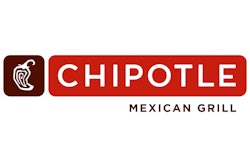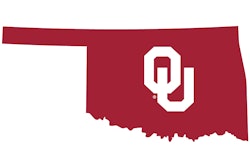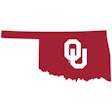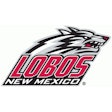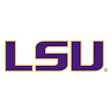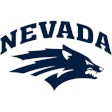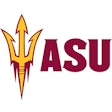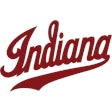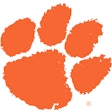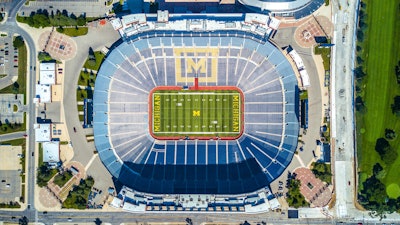
The University of Michigan athletic department is planning to survey fans and season ticket holders on ways to generate additional revenue amid the new revenue-sharing model resulting from the House v. NCAA lawsuit settlement.
As reported by the Detroit Free Press, Michigan intends to distribute $22 million to $23 million among student-athletes annually, the most amount schools are allowed to pay, beginning in the 2025-26 academic year when the settlement takes effect.
“There’s actually a lot of things we’ve left on the table,” Michigan athletic director Warde Manuel said. “We look forward to (sending out) that (survey) and hearing back. Not that we are looking to implement all of what we’re surveying them on, but just to get a sense of where our fans are and to get their feedback."
Perhaps the most notable among those options is in-stadium signage. Michigan is remains one of the rare universities that does not feature third-party signage inside its football stadium or any other campus athletic facilities. Likewise, the university has not sold naming rights to Michigan Stadium or its playing field.
Sponsorship would be one way for Manuel to make good on his vow to not cut sports as the cost of running a college athletic department rises in the post-House era.
“We are firm in our commitment not to eliminate any sports or reduce the number of scholarships we currently offer,” Manuel wrote in a letter published last Wednesday. "We plan to continue an approach that was established when Michigan started competing in intercollegiate athletics in 1865: providing championship-level support to each of our NCAA varsity sports."
Per the reporting of Tony Garcia of the Free Press, roster sizes will be capped under the new model, but departments will be allowed to issue scholarships to all players on all teams. "The lack of scholarship limits, Manuel estimates, could cost an additional $30 million draw from the scholarship fund. It's also perhaps the main reason he's looking into the 'source that’s untapped at this time' — advertising in the largest stadium in America," Garcia wrote.
"There's no commitment to doing it — but one of the things that stands out is in our stadium, in Michigan Stadium," Manuel said. "We have prided ourselves, we've had a history of no signage, no advertising in Michigan Stadium. As our fans go to other locations, they'll see how people have utilized their stadiums to bring in revenue. Now, the good news is, we have a source that is untapped at this point in time.
"Not that we have plans right now to do that, but that's one of the sense of questions that we want to get our fans to say: How would you like to see us develop revenue streams that would support our student-athletes? Is it ticket price increases? Is it through corporate sponsorship? Is it through looking at other premium options that others have, those kind of things?"



















